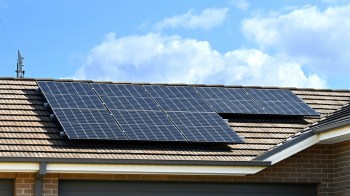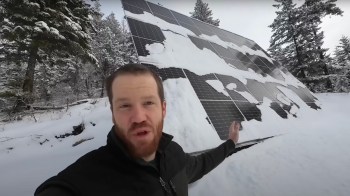When you consider that the addition of more solar panels to the grid can both increase renewable energy potential and reduce electricity costs, it seems like a no-brainer to find new places to incorporate them.
As reported by Altenergymag, NEXT Energy Technologies in Santa Barbara, California, has already made progress toward transforming modern buildings into solar-energy-generating structures with its NEXT OPV tech.
The company has successfully delivered large format glass "wall" panels with transparent organic photovoltaic (OPV) coatings to Gensler headquarters in Los Angeles.
Andy Cohen, co-chairmen of Gensler, told Altenergymag, "NEXT Energy Technologies' transparent OPV is an innovation breakthrough for architects that will transform the game plan for sustainable buildings in the near future and for net zero construction for decades to come by turning a building's glass facade into a source of clean, renewable energy."
So far, OPV panels typically only reach about 11% efficiency in converting light to energy, compared to an average of 15-20% energy efficiency in most commercially available photovoltaic panels, as reported by MarketWatch.
There are still plenty of benefits to OPVs, however. These organic versions use carbon-based semiconductors that require far more abundant materials than those typically used in solar panels — and they are much less toxic. They can also harvest light in the invisible infrared and ultraviolet spectrum while still letting visual light pass through them.
Save $10,000 on solar panels without even sharing your phone number Want to go solar but not sure who to trust? EnergySage has your back with free and transparent quotes from fully vetted providers that can help you save as much as $10k on installation. To get started, just answer a few questions about your home — no phone number required. Within a day or two, EnergySage will email you the best local options for your needs, and their expert advisers can help you compare quotes and pick a winner. |
The Gensler delivery involved 27- by 35-inch "Lite" panels, which are currently in a pilot run as they try to scale up to the full-scale goal of 60- x 120-inch versions. The OPV coating is a neutral gray and has achieved an efficiency of 3.5%, while its less transparent spandrel glass versions offer up to 12%.
NEXT Energy claims that buildings using its OPV-coated glass could handle up to 25% of a commercial building's energy load while seamlessly blending into the design and not blocking the view, as the Altenergymag report detailed.
Researchers have been working with OPVs in a variety of applications, even developing flexible waterproof versions that could end up on clothing. Others have been exploring new organic materials, which may increase the transparency potential of window-based solar generation, according to Phys.org.
HeliaTek in Germany has been working on its own organic solar films, which are "ultra-light, flexible, ultra-thin, and truly green." These can be installed on building facades and other exterior surfaces where traditional photovoltaic panels wouldn't work.
TCD Picks » Upway Spotlight
💡Upway makes it easy to find discounts of up to 60% on premium e-bike brands
The folks at NEXT Energy are looking toward the future with its enterprise. Its tech is set to last for 30 years or more, can increase points towards LEED certification, and can reward residents with lower carbon pollution and a more sustainable living environment.
Homeowners can also make energy-conscious upgrades to their own homes. The addition of rooftop solar panel arrays, geothermal heat pumps, and other green tech can help, with money back available from the government thanks to the Inflation Reduction Act's tax credit incentives.
Join our free newsletter for weekly updates on the coolest innovations improving our lives and saving our planet.
!["[This] will transform the game plan for sustainable buildings."](https://www-thecooldown-com-develop.go-vip.net/wp-content/uploads/2024/07/NEXT-Energy-Technologiesimage.jpg?w=1920&h=800)













